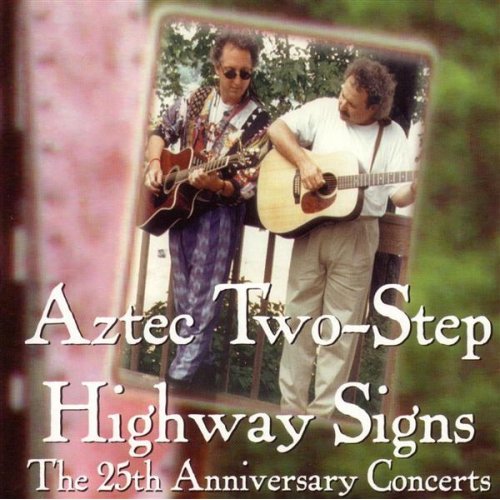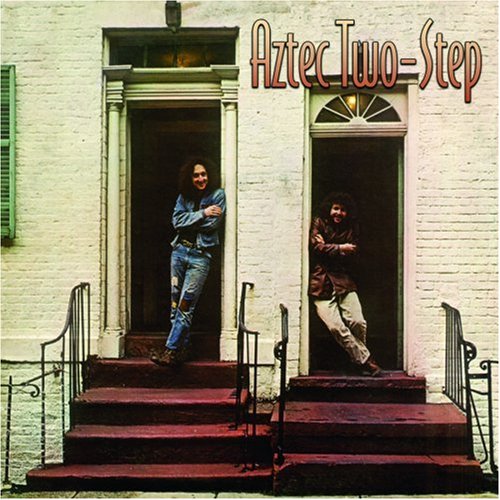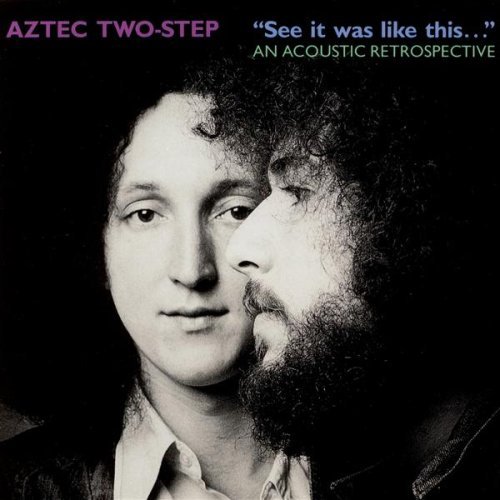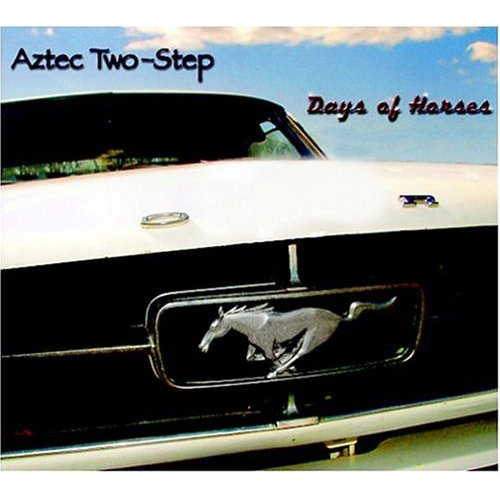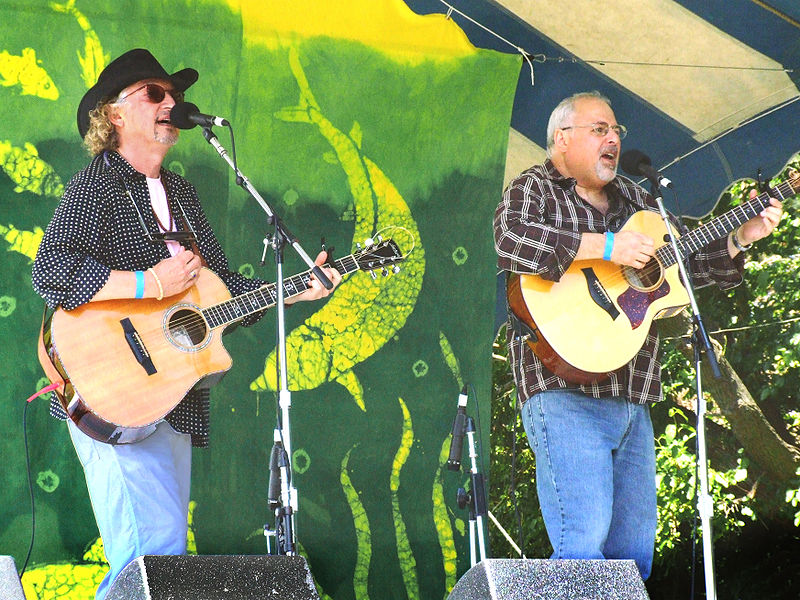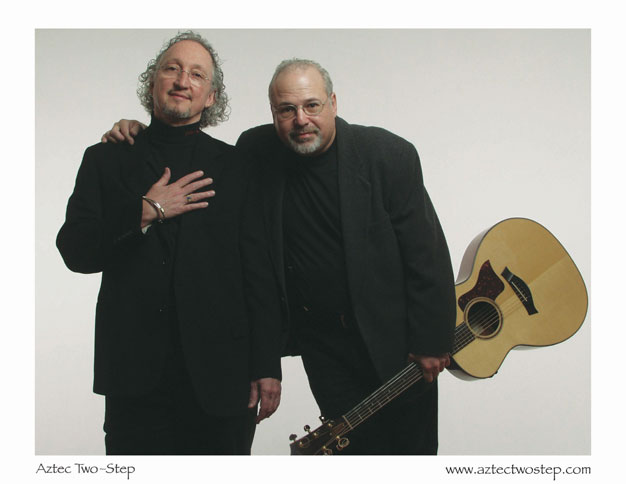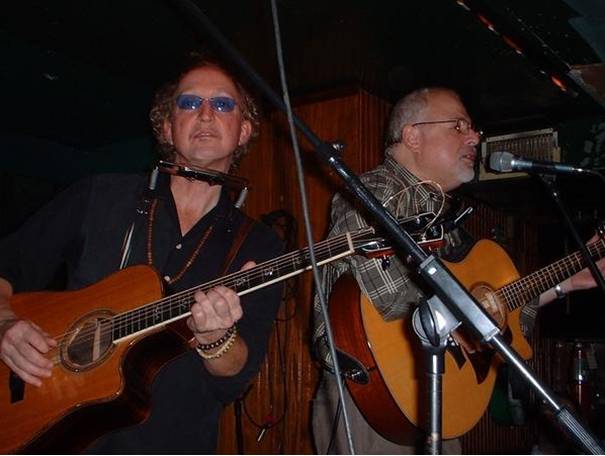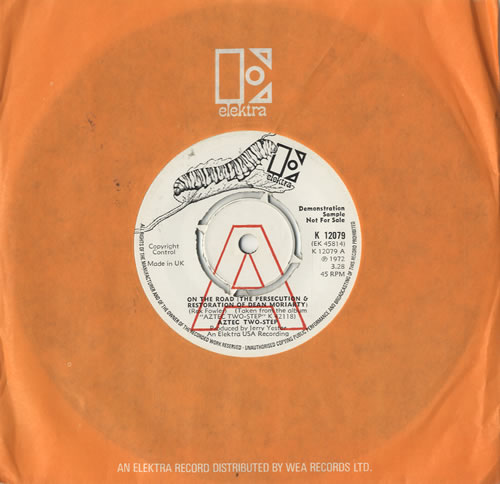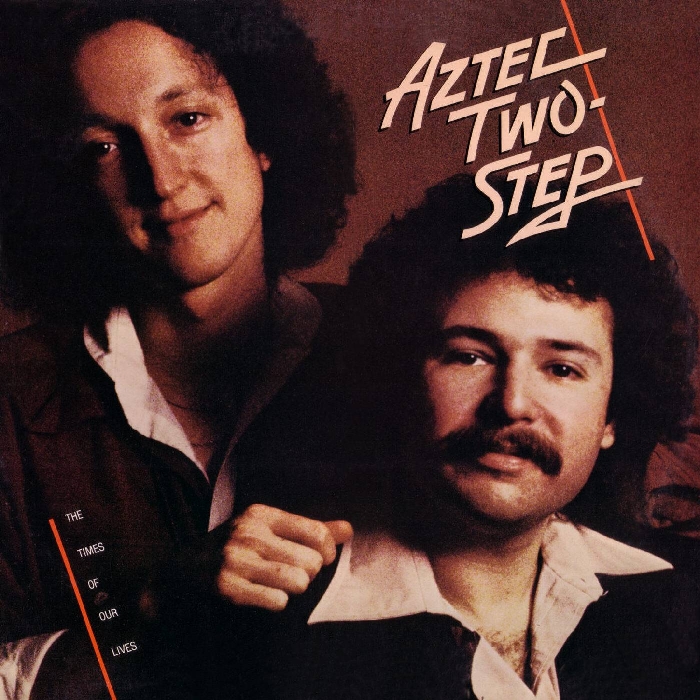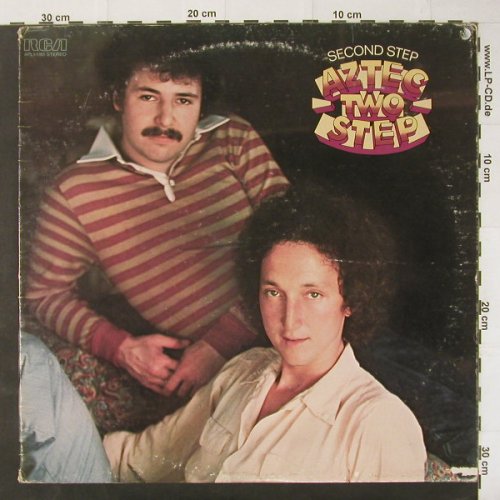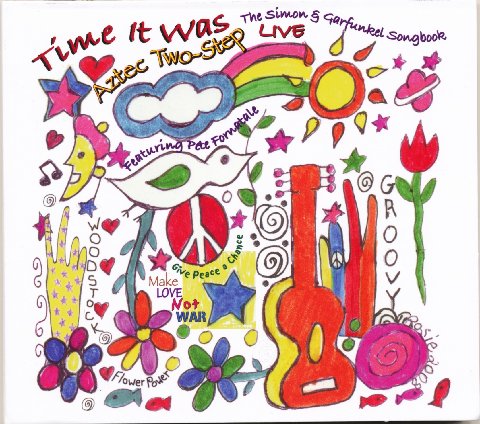Aztec Two-Step
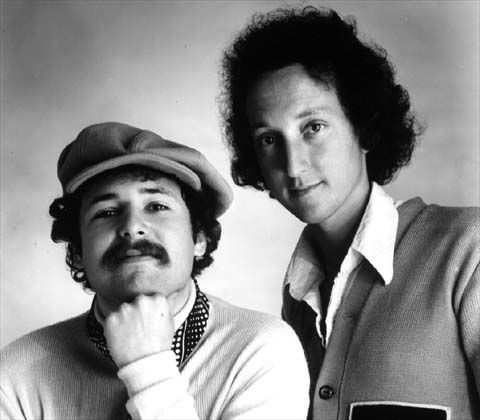
Rock ‘n roll history is loaded with prolific songwriting duos whose extraordinary teamwork and masterful craftsmanship sent them to the top of the charts and into the hearts of millions – and in some cases changed popular music forever – such as Lennon-McCartney, Jagger-Richards, Axl-Slash, and Tyler-Perry. In folk music, the glaring example is Simon and Garfunkel, but the most enduring pairing in that genre – arguably as influential as any other based purely on longevity and despite being a “no-hit wonder” – is Rex Fowler and Neil Shulman, collectively known as Aztec Two-Step and colloquially known as ATS.
And to their great credit – unlike all of the aforementioned pairings – Fowler and Shulman never had years-long periods of acrimonious separation during which their disparagement, derision and near defamation of one another made them seem less like kindred spirits and more like mortal enemies in the public eye.
Fowler, who spent his childhood in Connecticut and Maine, and Shulman, a Manhattanite, formed ATS after they met by chance at the Stone Phoenix Coffeehouse in Boston in 1971 during an open-mic night, when Fowler was 24 and Shulman was 19. Naming the group after a line in Lawrence Ferlinghetti’s book A Coney Island of the Mind, the duo epitomized contemporary folk music and released 17 albums featuring timeless songs with sublime harmonies and what critics glowingly called “intellectual lyricism,” becoming an instant crowd favorite wherever they played.
Two months after their first meeting, Fowler and Shulman left Boston for New York City, which remained ATS’s base throughout their career, and in 1972 they landed a contract with Elektra and released their self-titled debut to broad critical acclaim. The album included a regional radio hit – “The Persecution and Restoration of Dean Moriarty (On the Road),” based on the tragic hero in Lowell, Massachusetts, native Jack Kerouac’s groundbreaking 1957 novel On The Road – and featured Jerry Yester and John Sebastian of the Lovin’ Spoonful and Doug Dillard of Dillard & Clark as guest performers. In 1976, ATS released Two’s Company, followed by Adjoining Suites in 1977 and The Times of Our Lives in 1979, touring incessantly as the folk-music craze drew its last breaths while the New Romantic and hair-metal bands that would dominate the 1980s began appearing on the scene.
In the mid-1970s and early 1980s, ATS performed multiple times at prominent folk venues including The Bottom Line in Greenwich Village, The Troubadour in West Hollywood and The Cellar Door in Washington DC, and they gigged regularly at the Shaboo Inn in Willimantic, Connecticut, a state in which Aztec played particularly often over the decades at venues including the Agora Ballroom (West Hartford), Lloyd’s Jazz Club (North Hartford), the Palace Theatre (Stamford), Toad’s Place (New Haven) and the Bread Box Theatre (Willimantic).
In addition to Connecticut, ATS made multiple appearances in every other New England state over the years including Massachusetts venues like the Iron Horse Music Hall (Northampton), Music Inn (Lenox), the Rose Garden Coffee House (Mansfield), Jonathan Swift’s (Cambridge), the Narrows Center for the Arts (Fall River), the Bull Run (Shirley) and the Paradise Rock Club (Boston), Rhode Island spots including the Courthouse Center for the Arts (Kingston), Center Stage (Providence) and SALT (Newport), Meadowbrook Musical Arts Center in Gilford, New Hampshire, the Flynn Center for the Performing Arts in Burlington, Vermont, and Union Hall in Vienna, Maine.
Though headliners in their own right, ATS opened often for more nationally known performers, and Fowler credits famed singer-songwriter Harry Chapin for being the first such artist name to invite them to do so. Over the decades Aztec appeared in concerts with a bevy of New England-rooted artists including Tom Rush, Carly Simon, Bonnie Raitt, Jonathan Edwards, Michael Bolton, and NRBQ, and the list of other acts for whom the duo opened includes The Beach Boys, The Band, Bruce Springsteen, Roger McGuinn, Jim Croce, Jose Feliciano, Richie Havens, Arlo Guthrie, Don McLean, Jackson Browne, Warren Zevon, Seals and Crofts, John Sebastian, Richard Thompson, America, Poco, New Riders of the Purple Sage, Loggins and Messina, Pure Prairie League, Jimmy Buffet and Joan Armatrading.
In 1986, ATS released Living in America – which won the New York Music Award for Best Folk Album and led to appearances on Late Night with David Letterman and the radio programs The King Biscuit Flower Hour and World Café Live – plus a two-hour long DVD, The 15th Anniversary Live All-Star Concert. In 1989, the group released See, It Was Like This, then Of Age (1993) and Highway Signs: The 25th Anniversary Concerts (1996), recorded live at three New York coffee houses the year before. In 1999, PBS broadcast a documentary about ATS, No-Hit Wonder.
In 2001, Fowler and Shulman released a compilation album to celebrate their 30th anniversary as a duo, Live & Rare, followed by Plums (2003) and Days of Horses (2004). In 2007, they played at the Lowell Celebrates Kerouac Festival to mark the 50th anniversary of On The Road’s publication and released a DVD, Live at TCAN, recorded at the Center for the Arts in Natick, Massachusetts. Their next record was Time It Was: The Simon & Garfunkel Songbook in 2009, a tribute to the legendary duo, followed by Cause & Effect (2012) and their final album, Naked (2017).
In 2018, Shulman retired and Fowler formed a new quartet, ATS 2.0, featuring his wife Dodie Pettit, a founding member of the trailblazing mid-1960s all-female band The Untouchable, on keyboards and guitar, Steven “Muddy” Roues, who’s played alongside with B.B. King, Bo Diddley, and Howlin’ Wolf, on bass and harmonica, and Peter Hohmeister, a locally renowned performer and public-school music teacher, on drums.
Speaking in 2012 about Fowler and Shulman’s unprecedented number of years together as a venerated folk act, John Platt of the National Public Radio station WFUV in New York said, “The secret of Aztec Two-Step’s longevity isn’t just the harmony between Rex and Neal, it’s also the quality of the songs. While some were mostly inspired by a specific moment in time…they resonate anew today.”
(by D.S. Monahan – May 2022)

